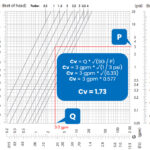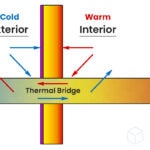
How to Balance Radiators: A Step-by-Step Guide
Learn how to balance radiators for even heat distribution, improving comfort and energy efficiency. Modern technology makes this process easier and more precise.

Balancing radiators ensures an even heat distribution throughout a building, making it more comfortable and energy-efficient.
Traditionally, this process is quite time-consuming and requires a certain skill level.
However, with modern technology, balancing your radiators has become easier and more precise.
What is Radiator Balancing?
Radiator balancing involves adjusting the valves on each radiator in your heating system to ensure they all heat up evenly.
Essentially, you are trying to create more pressure loss everywhere, not on the index circuit, to force the water to the radiator rather than short-circuiting through the path of least resistance.
Therefore, this is crucial for maintaining a consistent temperature throughout your home and reducing energy consumption.
Why Balance Radiators?
Balancing radiators is essential for several reasons:
- Comfort: Ensures all rooms reach and maintain a consistent, comfortable temperature.
- Efficiency: Optimises the performance of your heating system, potentially lowering your energy bills.
- Longevity: Reduces wear and tear on your heat pump / boiler and radiators by ensuring even heat distribution.
What If You Don’t Balance Radiators?
Failing to balance your radiators can lead to:
- Uneven Heating: Some rooms may be too hot while others remain cold.
- Increased Energy Costs: Your heat pump or boiler has to work harder to heat your home, using more energy.
- Reduced System Lifespan: Uneven stress on your heating system components can lead to more frequent repairs and a shorter lifespan.
The Modern Way to Balance Radiators
By using design and calculation software, balancing radiators has become automated.
h2x takes the guesswork out of the process, providing precise calculations and adjustments.
This means you save a significant amount of time commissioning a system.
Here’s how it works:
TAFE College undertook a real-life installation based on h2x’s balancing, which you can see here.
Furthermore, the installation was based on the design software’s specifications, and the professor was blown away by the accuracy.
Alan said: “The real-life temperatures aligned perfectly with the design temperatures calculated by h2x. This is an excellent result for ‘paper-based’ commissioning and a verification of the accuracy of the h2x system.”
Traditional Way to Balance Radiators
Traditionally, balancing radiators involves:
- Bleeding Radiators: Releasing trapped air to ensure maximum water flow.
- Manual Adjustments: Using a thermometer to measure the temperature difference between the inlet and outlet of each radiator and manually adjusting the valves.
- Repeated Testing: Continuously testing and tweaking the valves to achieve the desired temperature difference.
Problems with Balancing Radiators in the Traditional Way
While the traditional method can be effective, it has several drawbacks:
- Time-Consuming: Requires multiple rounds of testing, adjustment, and patience.
- Inaccurate: Manual measurements and adjustments can lead to inaccuracies.
- Complex: A good understanding of heating systems and patience are required to get it right.
Conclusion
Balancing your radiators is essential for a comfortable, efficient building.
While traditional methods can be effective, they are often time-consuming and complex.
However, our design and calculation software offers a modern solution, providing precise, easy-to-follow specifications that make the process quicker and more accurate.
h2x is an all-in-one tool for heat loss, system design, paperwork, estimating and producing drawings:
FAQs
How often should I balance my radiators?
Following installation, you should then check and balance your radiators annually, especially before the heating season starts.
Can I use the software with any heating system?
Yes, our software is designed to work with various types of heating systems.
Is it difficult to use the software?
Not at all. Our software is user-friendly, with step-by-step instructions that make the process straightforward, and customer support on hand to help whenever you need it.
What role does a thermostatic radiator valve play in balancing a radiator?
Thermostatic radiator valves (TRVs) help control the temperature of individual radiators by adjusting the flow of hot water. Therefore, to balance a radiator properly, ensure that the TRVs are set correctly, as they can impact the overall balance of your central heating system.
How do I adjust radiator valves for optimal performance?
To balance your radiators, you need to adjust both the thermostatic radiator valves and the lockshield valve. This ensures even distribution of hot water across all radiators in your central heating system, maintaining consistent temperatures throughout your home.
Why is it important to balance a radiator in a central heating system?
Balancing radiators in your central heating system ensures that each radiator heats up evenly, improving energy efficiency and comfort. Otherwise, an unbalanced system can lead to uneven heating, with some rooms being too hot while others remain cold, requiring more effort from your heating engineer to rectify.
What is the function of a lockshield valve in radiator balancing?
The lockshield valve controls the flow of water leaving the radiator. Therefore, properly adjusting the lockshield valve is crucial when balancing a radiator, as it regulates the amount of hot water passing through each radiator, ensuring an even temperature distribution throughout the system.
Will balancing radiators save me money?
Yes, by improving the efficiency of your heating system, you can reduce your energy consumption and lower your bills.
h2x: All-In-One Tool for Calculating, Designing, Estimating, and Paperwork

What's in the Pipeline?
Get technical resources delivered to your inbox weekly!
Testimonials
What Installers Say
What Consultants Say
A game changer for the humble plumber. Incredible.
Brad Winkel
Director at Queenstown Plumbing
Brilliant, simple and easy to use. Game changer.
James Major
Director at Hubb
Big time game changer to the industry!
Viv Jude
Director at UHC
Incredible software! Super user-friendly and allows you to save so much time.
Devni Gamage
Engineer at DMA
h2x is great software, our company use it nearly every day. It is easy to use with direct conversion from h2x to Revit.
Callum Craig
Engineer at WDE
h2x is fantastic software. It is very easy to use and the ability to output to Revit is a fantastic time saver.
Joe Kirrane
Engineer at MEP












